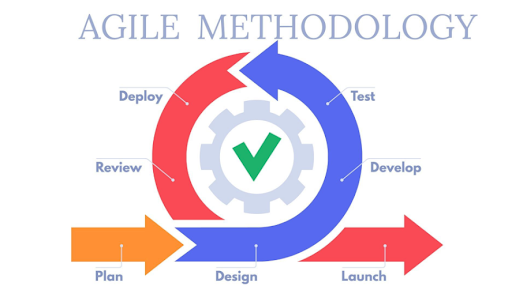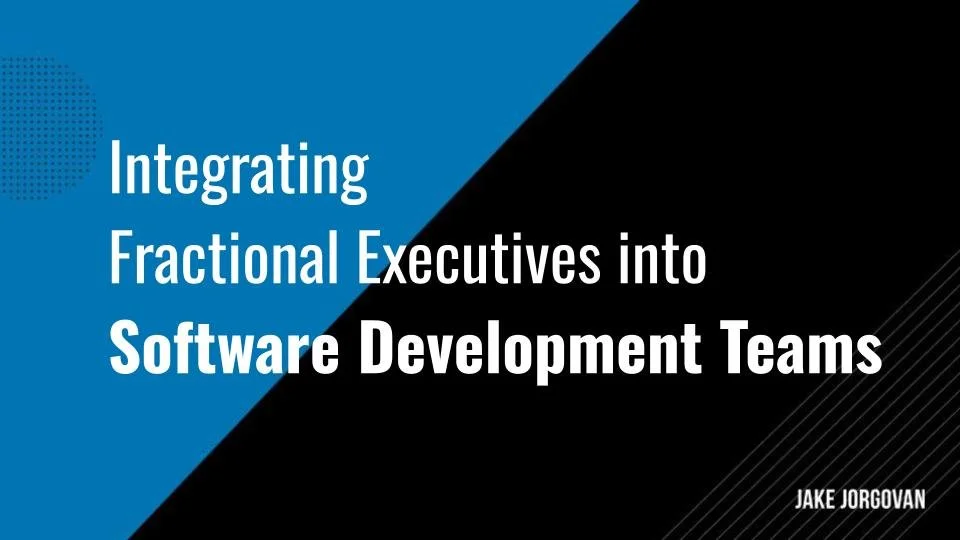5 Strategies Fractional CIOs and vCIOs Use to Drive Digital Transformation in Your Business
The fact is modern businesses can’t thrive without digital transformation.
Fractional CIOs and vCIOs are pivotal in this process. They bring strategic expertise without the full-time commitment.These experts also align technology with business goals.
It’s no wonder so many businesses leverage their skills to stay competitive.
This article explores 5 key strategies they use to drive digital transformation in your business.
Understanding these strategies can accelerate your digital transformation. It's about leveraging technology for growth and success.
Let's dive into the specifics.
The Value of Fractional CIOs and vCIOs
Fractional CIOs and vCIOs offer significant value to your business. They provide top-tier expertise without the full-time cost. You also gain access to experienced IT leadership that drives your strategic initiatives.
Fractional CIOs and vCIOs deliver tailored solutions. They assess your unique needs and create customized strategies. This ensures alignment with your business goals. Their flexible engagement models allow for scaling services as needed. You pay only for the time and expertise required.
These professionals bring a wealth of experience from various industries. They offer insights and best practices that can propel your business forward. Their broad perspective helps identify innovative solutions. This cross-industry knowledge is invaluable for staying competitive.
Engaging a fractional CIO or vCIO enhances your cybersecurity posture. They implement robust security measures to protect your data. Their proactive approach minimizes risks and ensures compliance with regulations. This protects your reputation and builds trust with clients.
They also drive digital transformation efforts. Their expertise in leveraging technology for business growth is unmatched. They identify areas for improvement and implement the latest tools and platforms. This accelerates your digital journey and enhances operational efficiency.
Fractional CIOs and vCIOs provide strategic IT planning. They align technology initiatives with your business strategy to ensure a cohesive approach to achieving your goals. Their involvement in budgeting and resource allocation maximizes ROI.
Another benefit is effective change management. These experts guide your team through technological transitions, minimize disruptions, and ensure the smooth adoption of new systems, which improves productivity and morale.
5 Digital Transformation Strategies Used By Fractional CIOs and vCIOs
1) Leverage Agile Methodologies
Driving digital transformation is essential for modern businesses. Fractional CIOs and vCIOs play a pivotal role in this journey. One effective strategy they use involves agile methodologies. Here’s how they make it work:
Assess the Current State: Evaluate existing processes and technology. Identify areas where agility can improve efficiency and innovation.
Define Clear Goals: Set specific, measurable objectives. Align these with the overall business strategy to ensure relevance and impact.
Build Cross-Functional Teams: Form small, diverse teams. Include members from different departments to enhance collaboration and perspective.
Adopt Agile Frameworks: Implement frameworks like Scrum or Kanban. These provide structured yet flexible approaches to managing projects.
Iterate Rapidly: Encourage short development cycles. Release updates frequently to gather feedback and make necessary adjustments.
Promote Continuous Improvement: Regularly review processes and outcomes. Adjust practices to improve efficiency and effectiveness.
Provide Training and Support: Offer ongoing training for team members. Equip them with the skills and knowledge needed to thrive in an agile environment.
Leverage Technology: Use tools like JIRA or Trello to track progress and manage tasks. These tools help maintain transparency and accountability.
Insider Tip:
To enhance agile adoption, we recommend starting with a pilot project. Select a team to test the methodology on a smaller scale. Monitor results closely and refine the approach before a wider rollout. This minimizes risk and ensures smoother integration into the broader organizational culture.
2) Implement Cloud-Based Solutions
Cloud-based solutions are transformative. They offer scalability, flexibility, and cost savings. Fractional CIOs and vCIOs know how to leverage these benefits effectively. Here’s how they implement cloud-based solutions:
Conduct a Needs Assessment: Evaluate your current infrastructure and identify the systems and applications that will benefit most from cloud migration.
Select the Right Cloud Model: Choose between public, private, or hybrid clouds. Each has unique advantages, depending on your specific needs and regulatory requirements.
Develop a Migration Plan: Create a detailed roadmap for the migration. Prioritize critical applications and data to ensure minimal disruption to operations.
Ensure Data Security: Implement robust security measures, encrypt data, and use secure access controls to protect sensitive information.
Leverage Cloud Services: Utilize Platform as a Service (PaaS) and Infrastructure as a Service (IaaS) offerings. These services provide essential infrastructure without the overhead of physical hardware.
Optimize Costs: Monitor usage and adjust resources as needed. Use tools provided by cloud vendors to track expenses and optimize spending.
Train Staff: Educate your team on new tools and processes. This ensures smooth adoption and effective use of cloud resources.
Monitor Performance: Continuously monitor system performance. Use analytics to identify and resolve any issues promptly.
Insider Tip:
We suggest starting with a small-scale implementation. Test the cloud environment with a non-critical application. This approach allows you to evaluate performance and make adjustments before a full-scale rollout. It minimizes risk and provides valuable insights for a successful transition.
3) Build a Culture of Innovation
Innovation drives growth and competitiveness. It requires a culture where ideas can thrive and evolve. Fractional CIOs and vCIOs excel in creating such environments. Here’s how they do it:
Set a Vision: Clearly articulate the innovation goals. Ensure everyone understands the importance and direction of these efforts.
Encourage Open Communication: Create channels for idea sharing. Use tools like Slack or Microsoft Teams to facilitate this.
Create a Safe Space for Ideas: Allow team members to share without fear of criticism. Promote an atmosphere where all ideas are valued.
Reward Innovation: Recognize and reward contributions. This can be through formal programs or simple acknowledgments.
Implement Agile Practices: Use agile methodologies to test and iterate ideas. This encourages quick experimentation and learning.
Leverage Cross-Functional Teams: Mix team members from different departments. This brings diverse perspectives and skills to the table.
Provide Resources: Allocate time and budget for innovation projects. Ensure teams have the tools they need to explore new ideas.
Monitor and Measure: Track the progress of innovation initiatives. Use KPIs to measure impact and adjust strategies as needed.
Insider Tip:
We recommend setting up an innovation lab. This dedicated space allows teams to work on experimental projects without the pressure of day-to-day operations. It provides a focused environment for creativity and rapid prototyping, and this approach has consistently yielded high-impact results for our clients.
4) Utilize Data Analytics for Decision Making
Data is the backbone of informed decision-making. Leveraging data analytics can transform your business operations. Fractional CIOs and vCIOs excel at integrating data-driven strategies. Here’s how they utilize data analytics effectively:
Assess Current Data: Evaluate existing data sources. Identify gaps and opportunities for new data collection.
Define Objectives: Set clear goals for what you want to achieve with data analytics. Align these goals with your business strategy.
Choose the Right Tools: Select analytics tools that meet your needs. Tools like Tableau, Power BI, or custom solutions can provide valuable insights.
Integrate Data Sources: Ensure all relevant data sources are connected. This provides a comprehensive view of your operations.
Clean and Organize Data: Prepare your data for analysis. Remove duplicates, correct errors, and structure it for easy access.
Build Dashboards: Create interactive dashboards. These should highlight key performance indicators (KPIs) and trends.
Train Your Team: Educate your team on how to use analytics tools. Provide ongoing support and training.
Analyze and Act: Review analytics reports regularly. Use insights to make informed decisions and adjust strategies as needed.
Insider Tip:
Focus on a specific area where data analytics can clearly impact. This approach allows you to demonstrate value quickly and refine your analytics processes before scaling them across the organization. This method has proven effective for rapidly showcasing the benefits of data-driven decision-making to stakeholders.
5) Enhance Cybersecurity Measures
Cybersecurity is critical in today's digital landscape. Protecting your business from threats ensures long-term stability and trust. Fractional CIOs and vCIOs implement robust cybersecurity measures effectively. Here’s how they enhance cybersecurity:
Conduct Risk Assessments: Identify potential threats and vulnerabilities. Regularly update assessments to stay ahead of new risks.
Develop a Security Policy: Create a comprehensive security policy that covers data protection, access controls, and incident response.
Implement Multi-Factor Authentication (MFA): Require MFA for all sensitive systems. This adds an extra layer of security beyond passwords.
Encrypt Data: Use encryption for data at rest and in transit. This protects information from unauthorized access.
Regularly Update Systems: Keep all software and systems updated. Patch vulnerabilities promptly to prevent exploitation.
Train Employees: Conduct regular cybersecurity training. Educate staff on recognizing phishing attempts and safe online practices.
Monitor Networks: Use advanced monitoring tools. Detect and respond to suspicious activity in real time.
Develop an Incident Response Plan: Prepare for potential breaches. Outline steps for containing and mitigating damage.
Insider Tip:
We recommend performing regular penetration testing. Simulate attacks to identify weaknesses in your security posture. This approach helps you strengthen defenses before actual threats can exploit vulnerabilities.
Prepare Your Business for the Future with a Fractional CIO or vCIO
Fractional CIOs and vCIOs offer expert solutions that align technology with your goals.
And we thoroughly explained how their strategies drive efficiency and innovation.
You need this expertise to transform your operations and get a competitive edge.
Leverage these solutions for growth and leverage their skills for success.



































